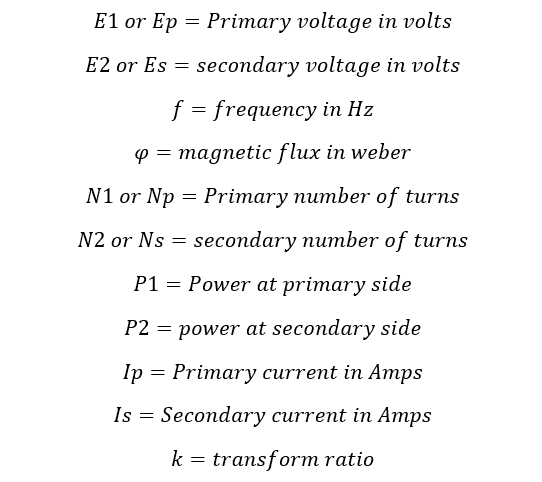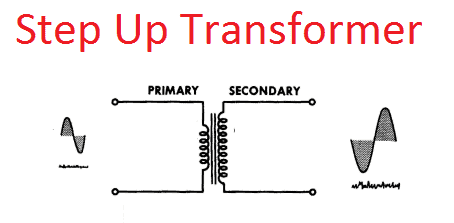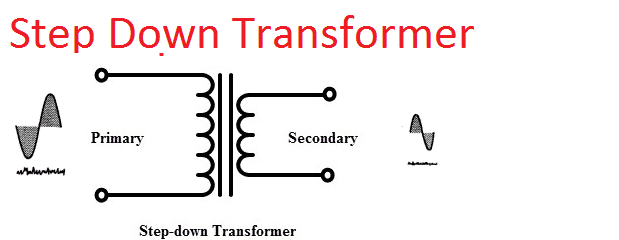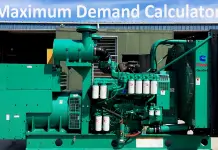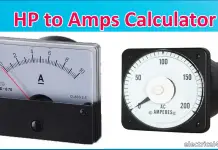What is Transformer:
A transformer is essentially a static electromagnetic device consisting of two or more windings that link with a common magnetic field.
A transformer works in mutual induction principle. One of these winding is called the primary winding and another one is called secondary winding.
The primary winding is connected to an alternating voltage source, an alternating flux is produced whose amplitude depending on the primary voltage and number of turns.
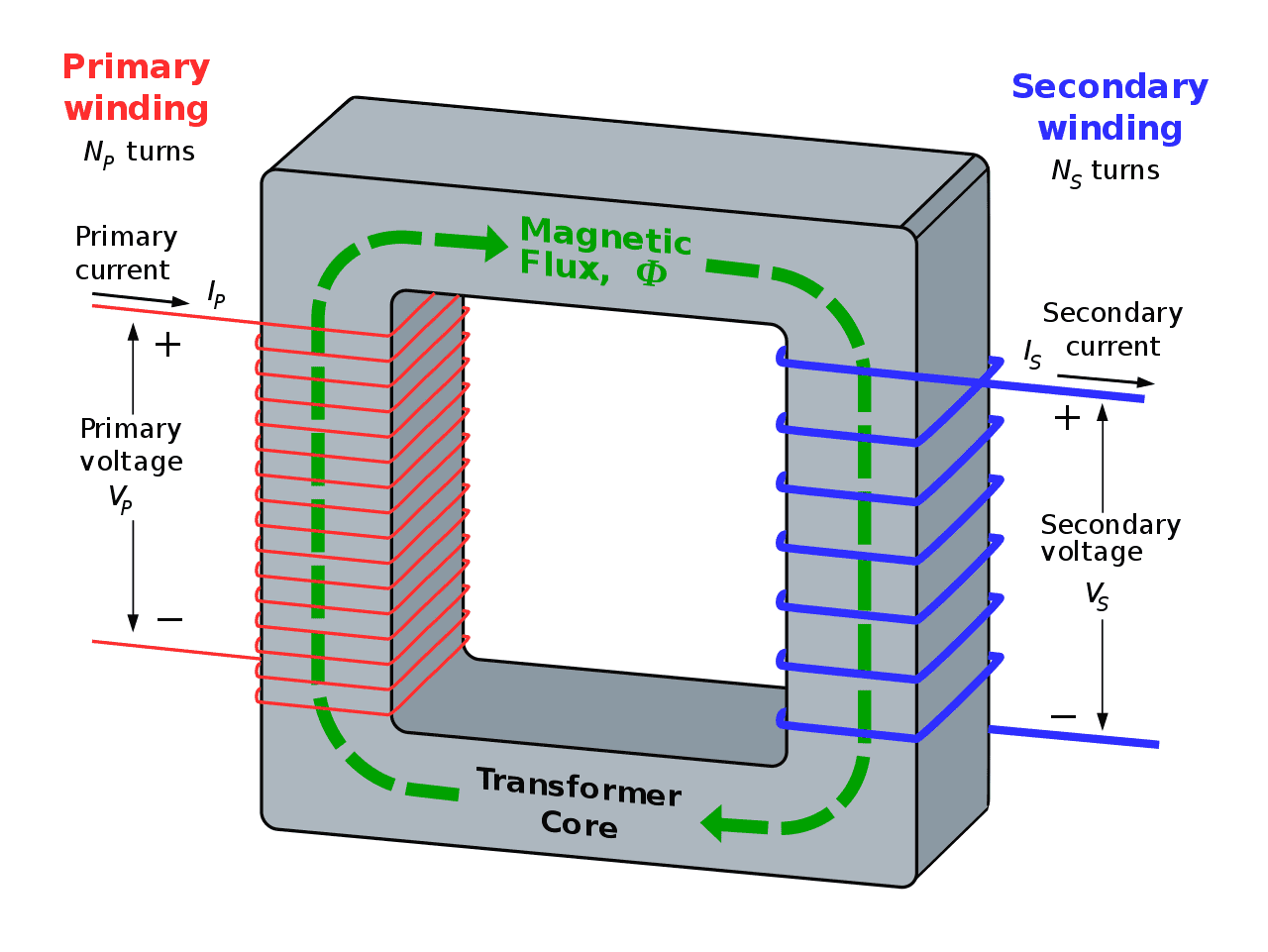
Generally, in transformer, you must know some important notations are
The primary voltage to the transformer is
In the primary winding This flux linking, with the secondary winding induces in it a voltage whose value depends on the amplitude of flux and the number of secondary winding turns. The induced voltage in secondary winding Es is
where Np, number of turns of the secondary winding.
Compare equation 1 and 2
Equation number 3 is the basic voltage transform ratio. You can get any voltage level in the secondary side by changing the using a suitable number of turn.
It must be understood that a transformer is not an energy conversion device but a device that transforms electrical energy from one or more primary AC circuits to one or more a.c. circuits with changed values of voltage and current.
From equation 3 and 4
The main reason for the extensive use of AC power systems is on account of transformers.
This is because the transformers allow the power to be transferred from the most economical transmission of generator voltage (that is achieved by high voltage transmission) and power utilization at the most suitable voltage required for different applications.
Note: Transformer does not operate with direct current. Also we should not give DC voltage to the transformer.
Presently, most of the electric power for industrial and utility purposes is generated by large hydro-electric plants and steam power stations in the form of three phase a.c. at a frequency of 50 Hz.
The voltages of the generators installed at the power plants usually varies from 6.6 kV to 22 kV.
To transmit the power over long distances the voltage of the generators has to be increased depending upon the quantum of power and the distance in order to reduce transmission losses and to affect the economy.
On the other hand, the voltage is decreased by the distribution substations to 3.3 kV, 6.6 kV, and 11 kV in rural, urban, and industrial areas.
Ultimately, the voltage used in industrial and domestic premises has to be dropped to 433 V(three-phase) or 230 V( single-phase) The raising and lowering of a.c. supply voltages are accomplished by transformers.
Therefore, as regards this application, the transformers may be classified as
(a) Step-up transformers-transformers which raise the voltage,
(b) Step-down transformers-transformers which lower the voltage
Step up and step down action is generally achieved by changing the turns ratio of the device.
Primary number of turns > secondary number of turns => Step down transformer
[wp_ad_camp_1]
Secondary number of turns > Primary number of turns => Step down transformer
However, basically, each transformer may be used as both a step-up and a step-down transformer because it is a reversible device. depending upon the power rating. The greater the power rating of the transformer the higher the efficiency The power transformers have a remarkably high efficiency ranging from 95 to 99.5 percent.

